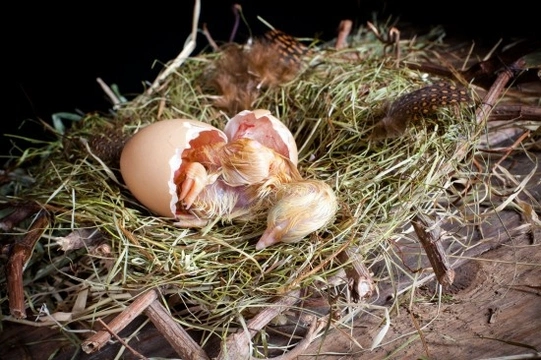Pets
Pets for studWanted petsBreedersAccessories & services
Knowledge hub
Support
Support & safety portal
Omphalitis - A Condition that Affects Chicks
Also known as either Yolk Sac infection or Mushy Chick Disease, Omphalitis is one of the most common causes for chicks dying in their first week. This is even more the case when chicks are hatched out in incubators because the environment is just perfect for bacteria to take hold and thrive. The condition is a bacterial infection that occurs in the yolk sack with various types of bacteria being the culprits namely E.coli, Proteus, Clostridia, Staphylococci, Pseudomonas and fecalis.
How a Chick Forms in the Egg
Chicks start growing in a small fertilised area which can be found at the top of the yolk after which a network of blood vessels start to form spreading out of the embryo to other areas of the yolk. The actual yolk sac is connected to a chick's navel and this is how they get their nourishment as they are forming in an egg. However before that can happen an enzyme needs to be produced which slowly alters the yolk which then starts to develop into an embryo.
When a chick is ready to hatch out, any yolk that's left will be sucked into their abdomens through their navel which will feed a chick during the first days of their lives after they've hatched out.
What Causes Omphalitis?
In the egg
The condition can be caused by bacteria that manages to get into an egg via the shell which is porous. The problem with incubators, is that they create the ideal environment for bacteria to thrive - if an egg explodes in them, it is crucial to take it out and thoroughly clean the incubator or you may find the other eggs become contaminated too. The eggs also need to be wiped over to ensure no debris is left on them before being put back in the clean incubator.
Once a chick hatches
Another time a chick may become infected is when they hatch out and their umbilicus is exposed which makes it very vulnerable to bacteria. If a chick happens to be next to dirty eggs or in a dirty incubator – they are more at risk of catching the bacteria. Chicks that are helped out of their eggs are also more susceptible and if they are taken out of an incubator before their navels have fully healed, they too are also more at risk of being infected when they are placed in a brooder.
Symptoms to Watch Out For
The first thing you will notice is that chicks get very lethargic and typically die quickly once they've hatched out. Most of them die within 48 hours of being infected by the bacteria. However, symptoms often vary because it all depends on the type of bacterial infection they've contracted but in most cases the following can be seen:
- Poorly healed, open or enlarged navels
- Subcutaneous oedema - fluid in the abdomen
- A blue tint to abdominal muscles
- Unabsorbed yolk which is usually smelly and putrid
All too often yolks get ruptured which means an inflammation of the inner wall in the abdomen occurs. Chicks show very little interest in anything and are more usually just attracted to a heat source, dying soon afterwards although some mortality can be later and as much as 14 days after hatching out.
Treating the Condition
There is no treatment for Omphalitis and the majority of chicks die which means that preventing an infection from taking hold in the first place is essential. Some people recommend cleaning the navel with an iodine solution a few times a day once a chick has hatched out and others use Vetercycin gel can be useful in preventing any bacterial from taking hold. It's also a good idea to add multivitamins like Save-A-Chick to their water on a daily basis.
Temperatures in brooders need to be kept constant and if any chicks look unwell, they should be kept in a separate brooder to prevent the bacteria from spreading to other chicks. Brooders need to be kept as clean as possible at all times. Often it is much kinder to put a little chick out of its misery which also helps reduce the chances of the bacteria spreading too.
How to Prevent Omphalitis
It is very important to keep everything as clean as possible when rearing chicks whether you hatch them out yourself or let a hen sit on her eggs. This includes ensuring that incubators, brooders and eggs themselves are always kept clean. Temperature and humidity levels need to be watched and kept constant. Nesting boxes need to be kept clean and dry to reduce the risk of bacteria forming. When you turn any eggs, make sure you have washed your hands before doing so and always wash them afterwards too. Incubators need to be disinfected both before and after they have been used to kill off any bacteria that may be present in them.



